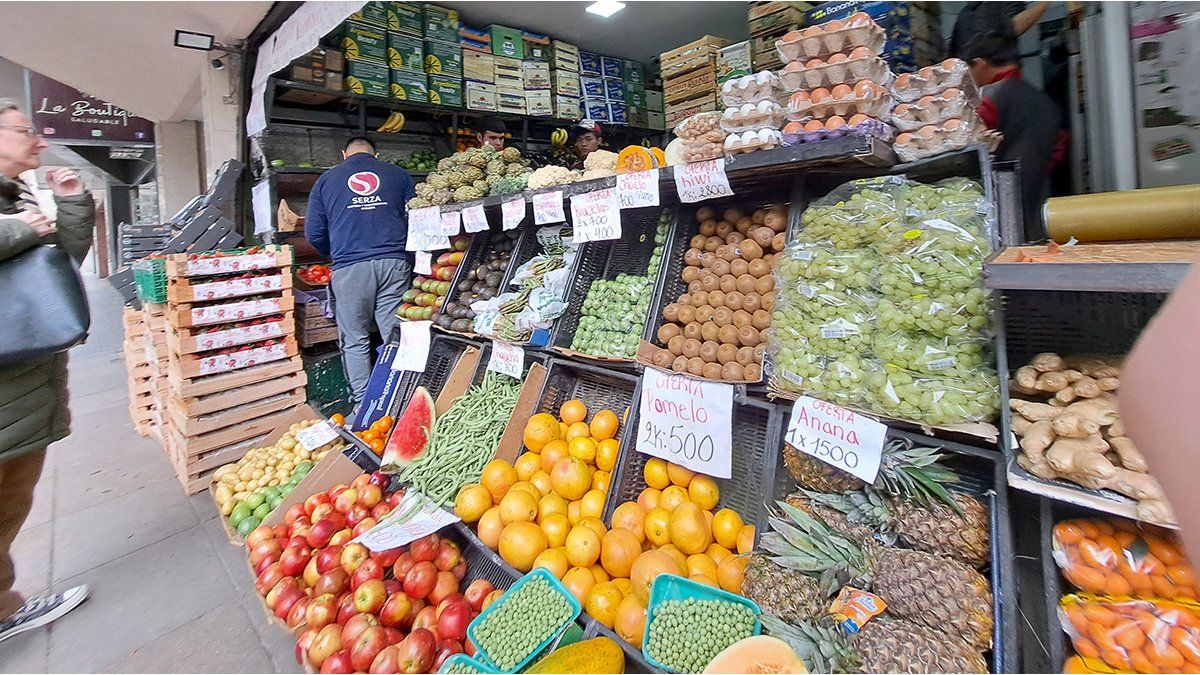The prices of the agri-food In December they increased 3.5 times from the field to the shelf, according to the Price Index at Origin and Destination (IPOD) prepared monthly by the Regional Economies sector of the Argentine Confederation of Medium Enterprises (CAME).
The consumer paid 3.5 pesos for every $1 the producer received. On average, producer participation explained 26.3 percent of final sales prices. The largest participation was for strawberry producers (52%), while the smallest was for red apple producers (11%).
Food: the products with the greatest gaps between producer and shelf
From the field to the gondola, the prices of the 19 fruits and vegetables that make up the IPOD basket multiplied by 4.7 times in December.
Meanwhile, for the five livestock products and by-products that make up the IPOD basket, the consumer paid 3.1 times more than what the producer received.
The products with the largest monthly IPOD gaps were red apple (9 times), pear (7.2), onion (6.8), zucchini (6.5) and lemon (6.4).
The red apple was the food with the greatest gap between the producer and the consumer, since its prices rose both at origin (1.5%) and at destination (20%).
In the case of pears, there was a 55.1% increase in producer prices, while consumer prices increased by 45%.
65a323f2e028a_706x398.jpg
The products with the largest monthly IPOD gaps were red apples, pears, onions, zucchini and lemons.
The increase at origin was due to an update by increase in costs in cold chambers, storage and logistics, CAME stated.
Onions showed increases at both ends of the value chain: 41.2% at origin, while at destination they increased by 16%.
This original increase occurred due to decrease in supply, partly due to rains in exporting countries like Brazil.
Another was the case of zucchiniwhere a monthly increase of 16.7% was observed at origin, while in gondola there was a decrease of 2% due to the non-validation of prices by consumers.
Meanwhile, the lemon had an increase of 114.8% to the producer – due to a decrease in supply, end of the harvest – and an 80% increase on the shelf due to higher freight costs and, above all, due to a rearrangement of prices in the trade. retail.
Food: which were the ones with the smallest gaps between the producer and the shelf?
The products with the lowest monthly IPOD gaps were four that are fruit and vegetable and one of animal origin.
Eggs (2 times) and chicken (2.6) generally have integrated production systems, which means that all actors in their respective value chains are part of the business risk.
Both products increased their prices to both the producer (27.3% and 50.9%, respectively) and the consumer (18% and 33%, respectively).
For their part, tomato and lettuce, both with a field-shelf gap of 2.8 times, had different behaviors.
The first increased its price at origin (5.9%), while at destination it decreased 29%.
The second presented increases in lThe two ends of the value chain: 11.4% (origin), −the storms that occurred in Santa Fe generated losses in production that impacted a lowering of the offerMeanwhile, at destination it increased by 34%.
Strawberries (1.9 times) rose 51.7% at origin and 9% at destination, due to maximum supply, which is why it was among the products with the lowest monthly IPOD gap.
Source: Ambito




